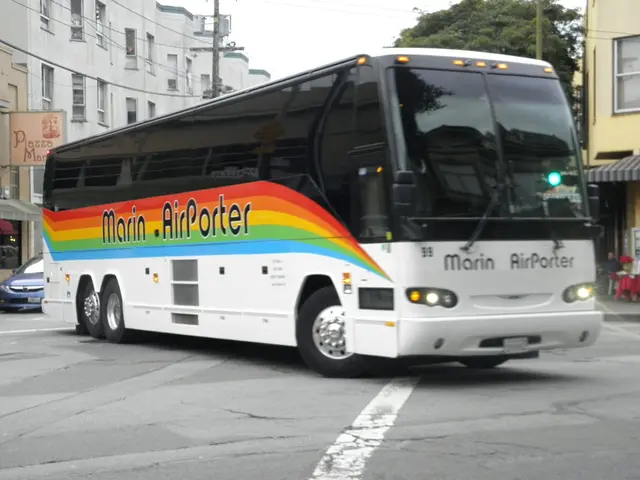Electric scooter speed restrictions being proposed in Russia
Speeding up the safety conversation: Anton Orlov's proposed speed limit for delivery e-bikes and e-scooters
In the rapidly evolving world of individual mobility devices, Anton Orlov, Director of the Institute for Contemporary Policy Research, has stepped into the spotlight with a powerful proposal.
Over the past few years, Russia's large cities have become bustling hubs of electric scooters, bicycles, and more, as residents embrace these innovative modes of transportation. However, it's not all smooth sailing.
Repeated incidents of accidents in pedestrian zones, often involving children, have raised serious concerns. These accidents have led to injuries, requiring immediate medical attention.
Recognizing the urgency, e-scooter rental operators have responded by reducing the maximum speed of their devices to 20 km/h - a commendable 20% decrease. Yet, there remains a group of users - delivery service couriers - who, contrary to these efforts, continue to put speed before safety.
This problematic behavior is causing widespread uproar, leading Orlov to issue an urgent plea. He advocates for an amendment to regulatory acts to limit the maximum speed of commercial delivery e-bikes and e-scooters to 20 km/h.
Let's take a moment to consider the implications of this proposal. While specific Russian regulations for commercial delivery e-bikes and e-scooters may not be extensively detailed, other regions provide us with valuable insights.
In many places around the globe, electric scooters and bikes are subject to speed limits, typically falling between 15-28 mph (24-45 km/h), depending on local laws and the vehicle's class. For commercial delivery services, additional regulations might be applied to ensure safety, such as registration, insurance, and specific speed limits designed to safeguard both couriers and the public.
Regardless of specific regulations, it's crucial for couriers to adhere to general safety guidelines. These include wearing protective gear, following local traffic laws, and maintaining their equipment regularly.
As we navigate this evolving landscape, it's clear that the safety of all road users is paramount. So, let's give Anton Orlov's proposal a fair hearing and strive for a safer, more responsible shared mobility environment.
For the latest updates on this issue and more, consider subscribing to our updates. Together, we can make a difference!
- Anton Orlov, in his proposed speed limit for delivery e-bikes and e-scooters, aims to minimize the number of accidents in pedestrian zones, particularly those involving children.
- To counteract the problematic behavior of some delivery service couriers who prioritize speed over safety, Orlov suggests amending regulatory acts to limit the speed of commercial electric scooters and bicycles to 20 km/h.
- Orlov's proposal is an attempt to align the practices of commercial delivery e-bike and e-scooter users with the speed limits generally applicable to these vehicles in many regions, which typically range from 15-28 mph (24-45 km/h).
- The implementation of such limits, along with additional regulations like registration, insurance, and specific speed limits, could help safeguard both couriers and the public.
- In the spirit of promoting a safer, more responsible shared mobility lifestyle, Orlov encourages all road users, especially couriers, to follow traffic laws, adopt protective gear, and maintain their equipment regularly to minimize risks associated with gadgets like e-scooters and electric vehicles.








